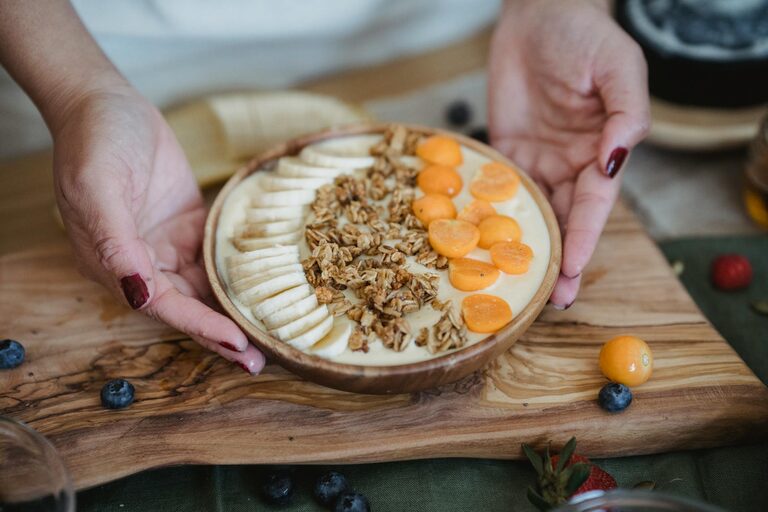Planning balanced meals can sometimes feel overwhelming, especially with busy schedules and countless food options. However, eating well doesn’t have to be stressful or complicated. With a few simple strategies, you can create balanced meals that nourish your body, save time, and even make cooking more enjoyable.
In this guide, we’ll explore practical steps and tips to help you plan balanced meals without the stress.
What Is a Balanced Meal?
Before diving into planning, it’s important to understand what “balanced” means in terms of meals. A balanced meal typically includes:
– Protein: Essential for muscle repair and energy (e.g., chicken, beans, tofu, fish)
– Carbohydrates: Provide fuel for the body (e.g., whole grains, potatoes, fruits)
– Healthy fats: Support brain health and absorption of vitamins (e.g., olive oil, nuts, avocado)
– Vegetables and fruits: Rich in vitamins, minerals, and fiber
– Hydration: Water or other unsweetened beverages
Including a variety from these groups helps ensure you get the nutrients your body needs.
Step 1: Understand Your Needs and Preferences
Everyone’s nutritional needs and tastes are different. Consider:
– Your activity level (more active people may require more calories or protein)
– Dietary restrictions or allergies
– Foods you enjoy and those you don’t
– Meal timing and how many meals/snacks you prefer each day
Knowing what works for your body and lifestyle makes planning easier and more enjoyable.
Step 2: Keep a Simple Framework
Rather than trying to invent elaborate meals every time, create basic frameworks to build on. For example:
– Protein + Vegetable + Grain: Grilled salmon + steamed broccoli + brown rice
– Protein + Salad + Bread: Chickpea salad + leafy greens + whole-wheat roll
– Soup + Sandwich + Fruit: Lentil soup + turkey sandwich + apple
Repeating these patterns reduces decision fatigue and speeds up meal prep.
Step 3: Plan Ahead with Meal Prep
Meal prepping is a time-tested method to take stress out of daily cooking. Here’s how to get started:
- **Pick a meal prep day:** Choose a day when you have time, usually weekends.
- **Make a shopping list:** Based on your planned meals and ingredients needed.
- **Batch cook protein and grains:** Grill chicken breast, cook quinoa or pasta in bulk.
- **Prep vegetables:** Wash, chop, or roast veggies in advance.
- **Store properly:** Use containers to keep meals fresh for the week.
With this done, you only need to assemble or reheat your meals on busy days.
Step 4: Stock a Balanced Pantry
Having a well-stocked pantry helps you whip up balanced meals quickly. Keep staples such as:
– Canned beans and lentils
– Whole grains (brown rice, quinoa, oats)
– Healthy oils (olive, avocado)
– Nuts and seeds
– Spices and herbs for flavor
– Frozen vegetables and fruits
This way, even if you don’t feel like grocery shopping often, you have nutritious options at hand.
Step 5: Use Simple Cooking Techniques
You don’t need to be a chef to prepare balanced meals. Here are some easy cooking methods:
– Roasting: Enhances flavor with minimal effort; try roasting vegetables with olive oil and herbs.
– One-pan meals: Combine protein, veggies, and grains in one dish for easy cleanup.
– Stir-frying: Quick and can incorporate many veggies.
– Slow cooker: Great for soups, stews, and tender proteins with minimal active cooking.
Step 6: Incorporate Variety Without Overcomplicating
Eating the same meals repeatedly can be boring, but variety doesn’t have to mean complexity. Try:
– Swapping different proteins (tofu, fish, beans)
– Using varied grains (barley, bulgur, farro)
– Changing seasoning blends or sauces
– Adding seasonal fruits and vegetables
A little variety keeps meals exciting and ensures a diverse nutrient intake.
Step 7: Listen to Your Body
Balanced eating is not about perfection. Pay attention to hunger and fullness cues, cravings, and how foods make you feel. Flexibility can reduce stress and promote a healthy relationship with food.
Bonus Tips for Stress-Free Meal Planning
– Use a meal planning app or calendar: Helps organize your week.
– Cook double portions: Freeze extras for busy days.
– Include leftovers: Plan meals that reheat well.
– Ask for help: Share cooking duties with family or friends.
– Keep recipes handy: Save your favorite easy recipes for quick reference.
Conclusion
Planning balanced meals without stress is achievable with a bit of preparation and simple strategies. Focus on your personal needs, create reliable meal frameworks, prep ahead, stock your pantry smartly, and choose easy cooking methods. Over time, these habits will make nutritious eating feel natural, saving you time and reducing mealtime anxiety.
Remember, the goal is progress, not perfection. Enjoy the journey toward healthier meals with less stress!

